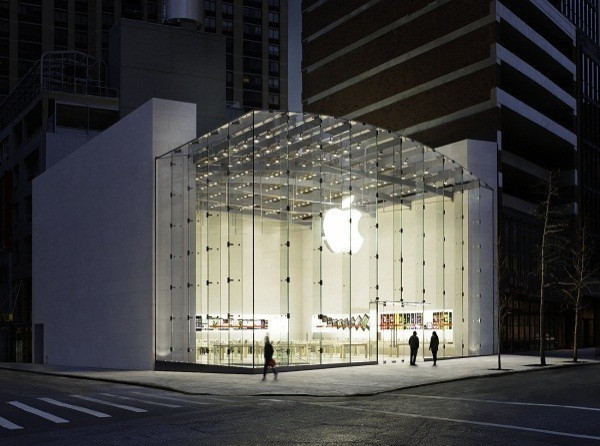Apple's Black Friday Sales Appear Solid: Analyst

Barclays Capital said its checks indicate that sales over Black Friday and Cyber Monday were quite solid for Apple Inc., largely in line with its expectations.
We checked and visited with several stores, with our findings indicating iPad sales picked up a bit, along with MacBook Airs and MacBook Pros with very large crowds throughout the U.S., said Ben Reitzes, an analyst at Barclays Capital.
The discounts for iPads were slightly better than those last year ($61 off the 3G-enabled versions), and Reitzes has predicted a slightly bigger price promotion. Predictably, his checks showed the most elasticity for the 16GB Wi-Fi version of the iPad, given it had the highest percent of total price discounted.
Apple's U.S. Black Friday sale included $101 off MacBook Pros, iMacs and MacBook Airs, up to $61 off iPads, $11 off iPod nanos and up to $41 off iPod touches.
As expected, Apple resellers presented higher levels of discounting with some offering up to $39 off Mac Minis, $100 off current MacBook Air models, $128 off iMacs and more than $150 off MacBook Pros.
Reitzes believes Mac sales are very healthy into year-end and have not yet seen Apple impacted by potential HDD shortages and the new discount on the low-end MacBook Air seemed to be successful for Apple.
ShopperTrak indicated overall Black Friday sales grew 6.6 percent year-over-year with traffic up 5.1 percent year-over-year, while the National Retail Federation indicated traffic was up 6.6 percent year-over-year at stores over Black Friday weekend with the average shopper spending almost $400, up 9.1 percent year-over-year (the biggest year-over-year increase since 2006).
Apple seemed to fare well outside its own stores and online. Our colleague Alan Rifkin noted his checks indicated that Apple fared relatively well at Best Buy. According to IBM's online retail benchmark study, online sales rose 24 percent, said Reitzes.
IBM stated that 14.3 percent of all shopping on Black Friday was done on a mobile device, led by Apple, with iPhone and iPad ranking number one and number two of the shopping on mobile devices (5.4 percent and 4.8 percent, respectively or 10.2 percent combined), ahead of Android devices, which came in at number three with 4.1 percent.
In fact, IBM stated that shoppers using the iPad led to more retail purchases with conversion rates reaching 4.6 percent versus 2.8 percent for overall mobile devices.
Reitzes also noted that comScore stated online retail spending indicated that Black Friday sales were up 18 percent year-over-year with Thanksgiving Day sales up 26 percent year-over-year (even as brick and mortar retailers expanded hours of operation during the period). He believes tablets were popular items.
Reitzes believes that iPad sales are clearly starting to pick up into the holidays but his estimate for iPad unit sales of 13.9 million for the December quarter may still prove optimistic (he believes investors are far more pessimistic).
Apple has indicated that it expects to set a new record for iPad shipments in the December quarter, a period that also benefits from an extra week (14-weeks versus the normal 13), helped by very strong sales overseas.
Reitzes believes the 8GB, 7-inch Kindle Fire from Amazon for $199 may have paused some level of tablet demand in the U.S. earlier this quarter given its disruptive price point.
On Monday, Amazon.com stated that this past Black Friday was the best ever for the Kindle family and the popular Kindle Fire remained the best-selling product across all of Amazon since its introduction 8 weeks ago, but didn't give out any numbers. However, Reitzes believes the iPad still stands out as the industry standard in terms of software integration.
Reitzes said reviews for the Fire so far are less than flattering with the positives focusing on price while negative reviews focused on what it lacked (no camera, microphone, GPS, Bluetooth functionality, calendar or note pad). Some of the negative reviews focus on speed as animations didn't flow like an iPad.
For fiscal 2012, Reitzes estimates iPad units sales will grow 47 percent to 47.7 million versus 32.4 million in fiscal 2011. His research still points toward Apple launching the iPad 3 in the March time-frame with an HD screen, Siri integration and a faster processor.
However, Reitzes also believes it is possible that Apple keeps the iPad 2 in the category in 2 ways -- first as a possible iPad 2S that includes a faster processor and Siri integration, and second -- keeping the current 16GB version of the iPad 2 in the line-up at a much lower price.
Despite some deceleration in the U.S., Reitzes believes Macs have momentum overseas in Apple's December quarter. He estimates Mac unit growth of 22 percent year-over-year in the calendar fourth quarter.
In addition, iPhone 4S sales still appear robust with sales ramping in Asia. Reitzes currently estimates Apple calendar fourth quarter revenue of $39.0 billion (consensus is $37.9 billion) with gross margin of 40.0 percent and EPS of $9.66 (consensus is $9.70).
Apple stock closed Tuesday's regular trading down 0.78 percent at $373.20 on the NASDAQ Stock Market, while in after-hours the stock moved down 0.25 percent to $372.25.
© Copyright IBTimes 2025. All rights reserved.




















